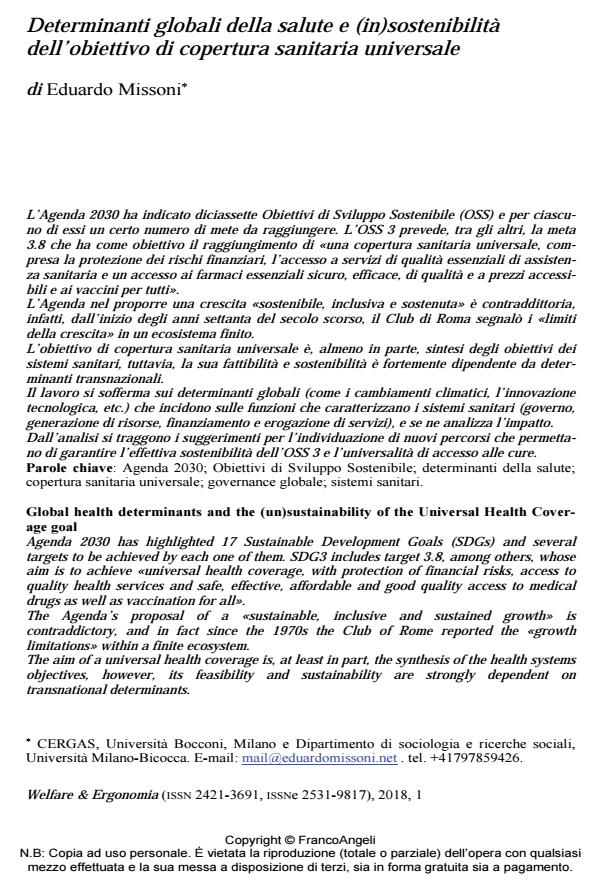Global health determinants and the (un)sustainability of the Universal Health Cover-age goal
Journal title WELFARE E ERGONOMIA
Author/s Eduardo Missoni
Publishing Year 2019 Issue 2018/1
Language Italian Pages 28 P. 11-38 File size 279 KB
DOI 10.3280/WE2018-001002
DOI is like a bar code for intellectual property: to have more infomation
click here
Below, you can see the article first page
If you want to buy this article in PDF format, you can do it, following the instructions to buy download credits

FrancoAngeli is member of Publishers International Linking Association, Inc (PILA), a not-for-profit association which run the CrossRef service enabling links to and from online scholarly content.
Agenda 2030 has highlighted 17 Sustainable Development Goals (SDGs) and several targets to be achieved by each one of them. SDG3 includes target 3.8, among others, whose aim is to achieve «universal health coverage, with protection of financial risks, access to quality health services and safe, effective, affordable and good quality access to medical drugs as well as vaccination for all». The Agenda’s proposal of a «sustainable, inclusive and sustained growth» is contraddictory, and in fact since the 1970s the Club of Rome reported the «growth limitations» within a finite ecosystem. The aim of a universal health coverage is, at least in part, the synthesis of the health systems objectives, however, its feasibility and sustainability are strongly dependent on transnational determinants. The paper concentrates on the global determinants (such as climate changes, technological innovations, etc.) which impact on the functions typical of health systems (government, resource generation, funding and supply of services) and it analyses their impact. The analysis provides suggestions on the identification of new pathways allowing guarantees of an effective sustainability of SDG3 and a universal access to care.
Keywords: Agenda 2030; Sustainable Development Goals; Health Determinants; Universal Health Coverage; Global Governance; Health Systems.
Eduardo Missoni, Determinanti globali della salute e (in)sostenibilità dell’obiettivo di copertura sanitaria universale in "WELFARE E ERGONOMIA" 1/2018, pp 11-38, DOI: 10.3280/WE2018-001002